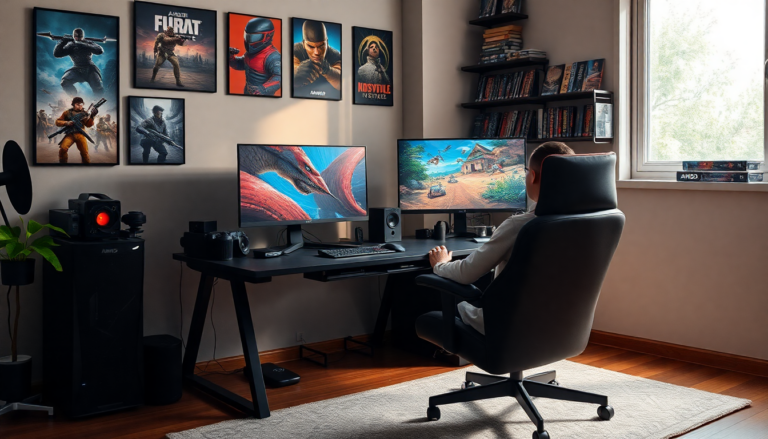Argomenti trattati
In a world increasingly dominated by high-end gaming hardware, it’s refreshing to see a major player like AMD acknowledging the needs of budget gamers. Recently, Frank Azor, AMD’s Chief Architect of Gaming Solutions and Marketing, made waves on social media when addressing concerns over the company’s ongoing production of GPUs with 8GB of VRAM. His insights reveal a deeper understanding of the gaming landscape and the realities faced by everyday gamers.
Understanding the market demand
Azor’s statement highlights a critical point: the majority of gamers are still playing at 1080p resolution. According to his analysis, many of the most popular games are esports titles, which typically do not require extensive memory resources. He emphasizes that AMD would not continue to produce these GPUs if there wasn’t a viable market for them. This perspective is backed by data from the Steam Hardware Survey, which reveals that over half of gamers (55.27%) are still using 1080p monitors. Surprisingly, even in 2025, the GTX 1650—an older model with just 4GB of VRAM—remains one of the most used GPUs among gamers.
What does this mean for the average gamer? It suggests that for many, the quest for ultra-high definitions and massive VRAM may not be necessary. For instance, the RTX 4060 laptop version, which also features 8GB of VRAM, indicates a strong preference for mid-range GPUs that can handle the gaming demands without breaking the bank. It’s a strategic move that aligns perfectly with the budget-conscious gamer who simply wants a reliable experience without the frills.
The challenge of limited VRAM
However, the conversation around VRAM isn’t without its challenges. As the gaming landscape evolves, the limitations of 8GB of VRAM have become a topic of concern, especially with graphically intensive games pushing the boundaries of hardware capabilities. For instance, the upcoming 5070 is rumored to feature 12GB of VRAM, which raises questions about the future-proofing of current models. With prices fluctuating wildly in the market, the value of the 8GB RX 9060 XT, priced at a competitive $299, stands out as a possible game-changer for many.
I’ve personally gamed on an 8GB Radeon RX 6600 for years and have yet to feel any performance lag, which speaks volumes about how well these GPUs can handle today’s gaming demands. Even running games through compatibility layers on different operating systems hasn’t posed any issues. Many gamers, myself included, find that 8GB is often more than sufficient for our needs.
Accessibility in gaming
There’s something to be said about accessibility in gaming. With the rising costs of high-end setups, having affordable options like budget GPUs is essential for keeping the gaming community diverse and inclusive. Not everyone can afford the latest Nvidia models or the latest advancements in graphics technology. The RX 9060 XT presents a compelling option for those who want to enjoy popular titles like Fortnite or Minecraft without the hefty price tag.
This trend toward budget-friendly GPUs also reflects a broader shift in gaming culture, where indie games and less demanding titles are gaining popularity. Games like Marvel Rivals and Schedule One are perfect examples of how gamers can enjoy rich experiences without needing top-tier hardware. As Azor rightly points out, there’s no harm in offering budget-oriented solutions that allow a broader audience to engage with the gaming world.
Future considerations and market dynamics
Of course, the conversation doesn’t end with just the 8GB models. AMD is also providing options for gamers who demand more. The availability of 16GB versions of the RX 9060 XT ensures that there’s something for everyone. But the challenge lies in ensuring that the prices reflect the actual value, especially in a market where inflated prices can deter potential buyers.
As we move further into 2025, it will be interesting to see how these dynamics play out. Will budget GPUs gain more traction as gamers continue to prefer 1080p experiences? Or will the demand for higher specs push manufacturers to reevaluate their offerings? Personally, I believe that as long as there’s a market for budget-friendly solutions, companies like AMD will continue to thrive and innovate.
In conclusion, the focus on budget gaming solutions is not just a trend; it’s a necessity in today’s market. As more gamers seek value over extravagance, it’s essential for companies to recognize and cater to this demographic. The future of gaming should be accessible, and AMD’s strategy is a step in the right direction.

